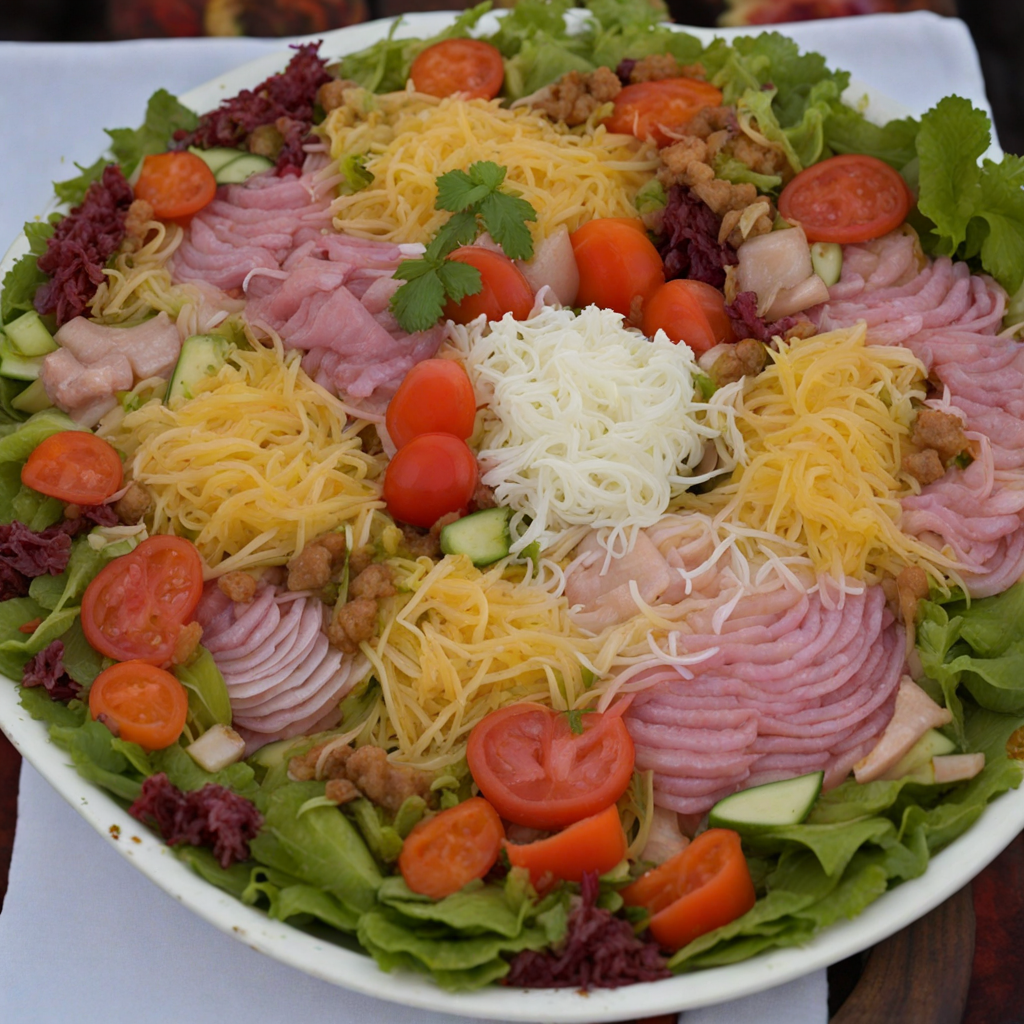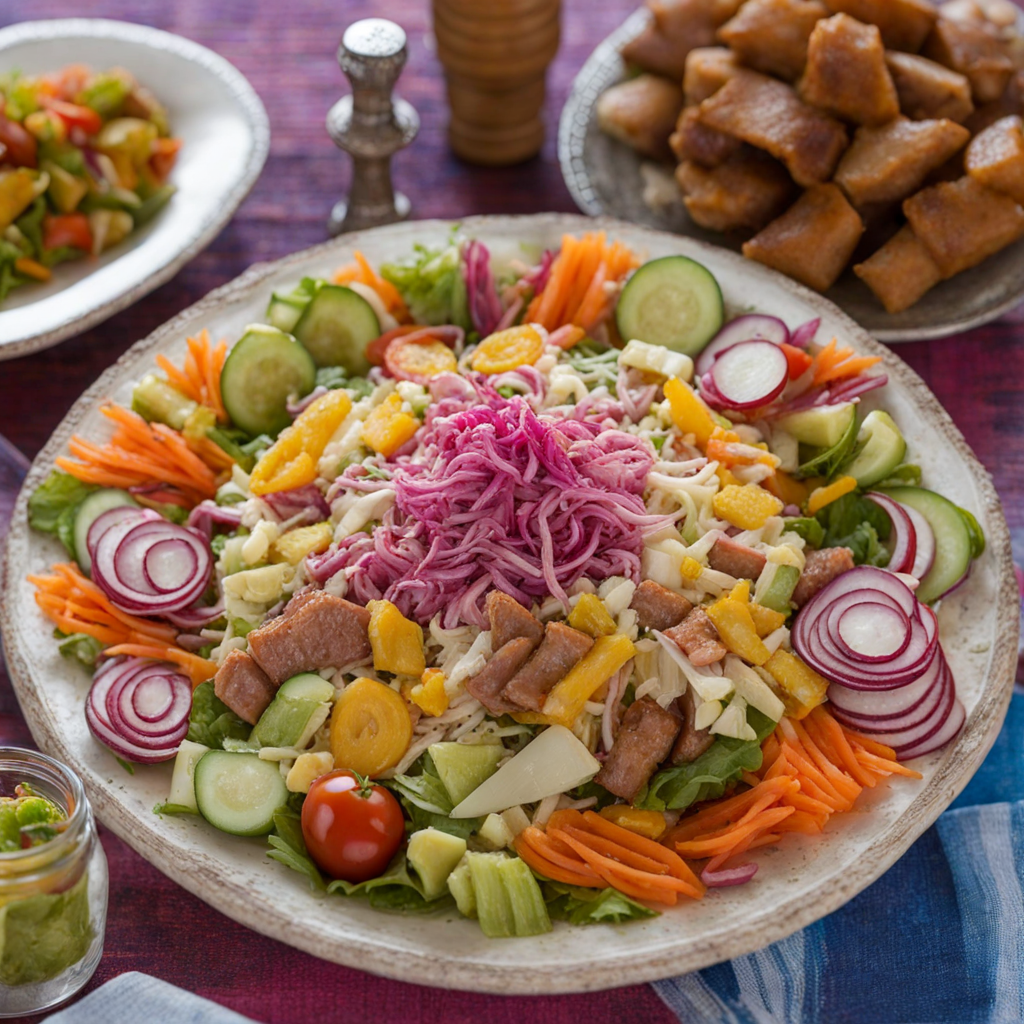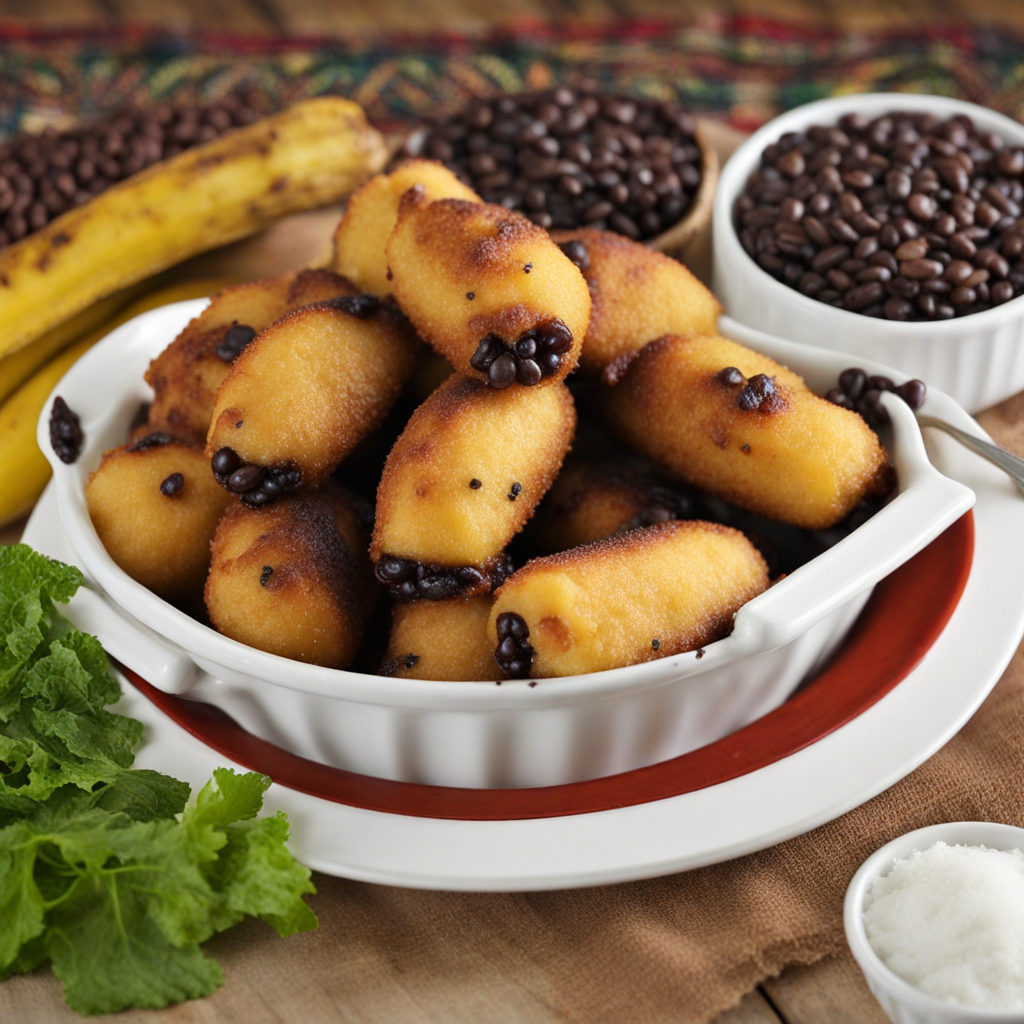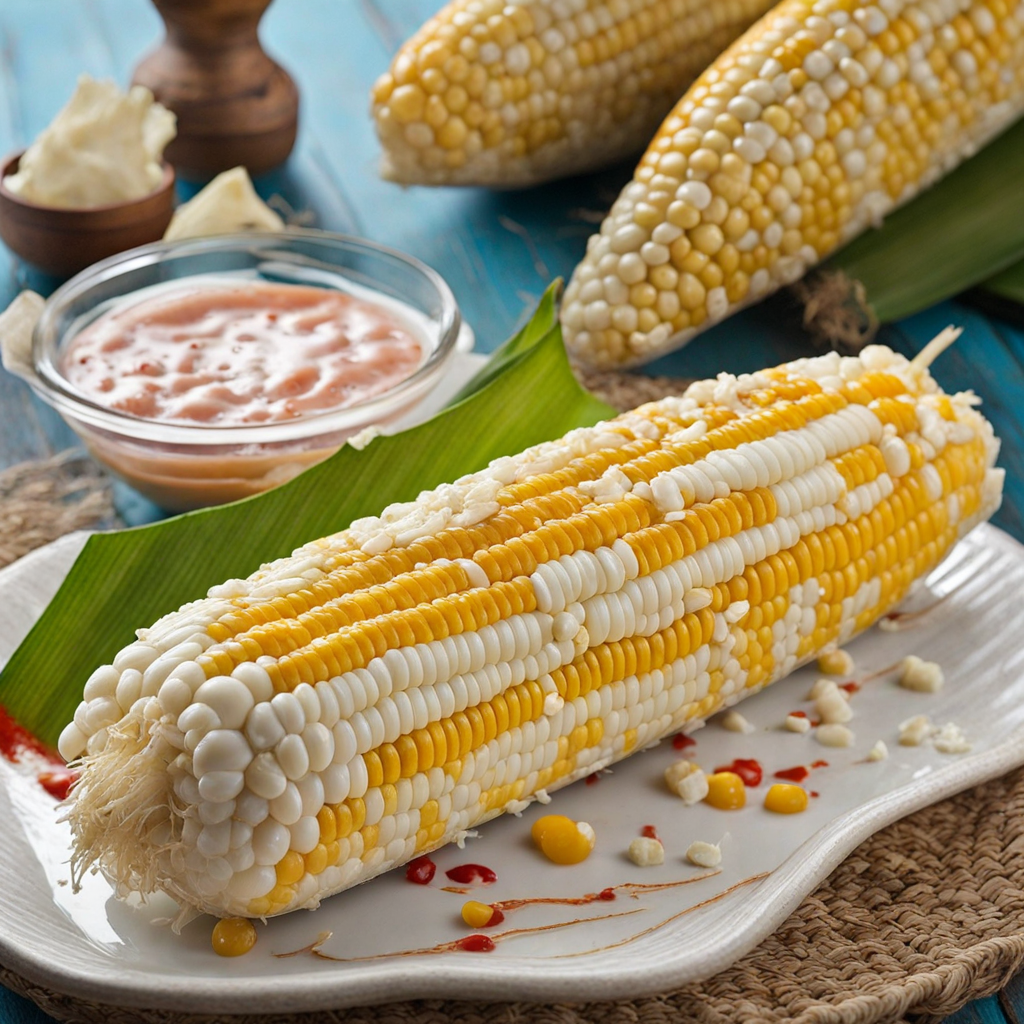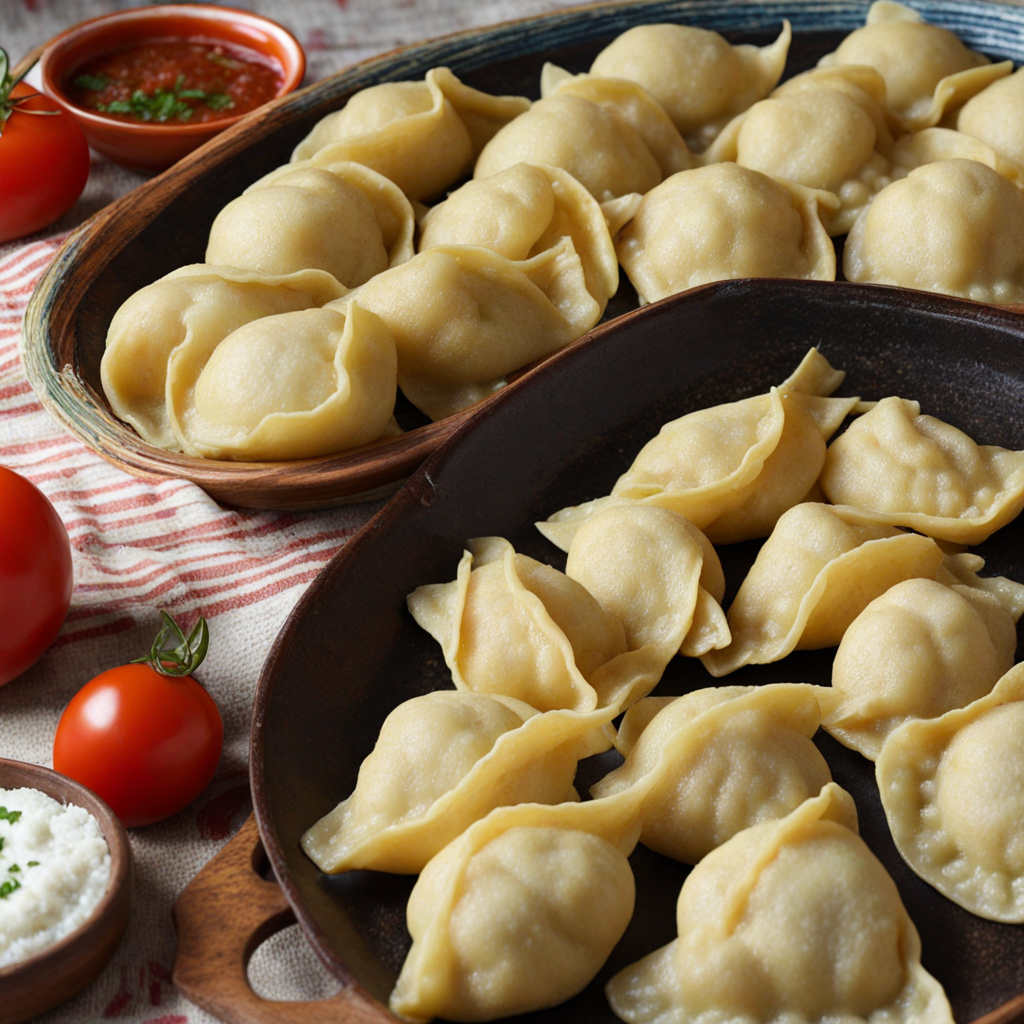Fiambre
Fiambre is a traditional Guatemalan dish that embodies the rich cultural heritage and culinary diversity of the country. This colorful and vibrant cold salad is typically prepared for the Day of the Dead celebrations, but it can be enjoyed year-round. At its core, Fiambre consists of a medley of ingredients, including various types of meats such as chicken, beef, and pork, as well as a variety of pickled vegetables, cheeses, and herbs. The dish is a feast for the eyes, showcasing a stunning array of colors and textures, from the crispy crunch of fresh vegetables to the savory depths of cured meats. The preparation of Fiambre is a labor of love and often involves family gatherings where everyone contributes to the assembly of this elaborate dish. The meats are usually marinated and cooked to perfection, while the vegetables are pickled in a tangy brine that adds a delightful zing. The combination of flavors is further enhanced by the addition of olives, capers, and even hard-boiled eggs. Each family may have its own unique recipe, with variations that reflect personal tastes and regional influences, making every encounter with Fiambre a unique culinary experience. When served, Fiambre is typically accompanied by a side of spicy salsa or a tangy dressing, which complements its rich flavors. The dish is often enjoyed chilled, making it a refreshing option, especially in warmer climates. Savoring Fiambre is not just about tasting food; it’s about experiencing a tradition that connects generations. Each bite tells a story of Guatemalan culture, family gatherings, and the celebration of life, making it a must-try for anyone looking to explore the diverse flavors of Central American cuisine.
How It Became This Dish
The Rich Tapestry of Fiambre: A Guatemalan Culinary Tradition Fiambre, the quintessential Guatemalan dish, is a vibrant and complex cold salad traditionally prepared for the Day of the Dead (Día de los Muertos) celebrations. This unique gastronomic creation reflects a blend of indigenous and Spanish influences, showcasing the rich cultural heritage of Guatemala. To understand the significance and evolution of fiambre, one must delve into its origins, its cultural importance, and how it has developed over the years. #### Origins: A Fusion of Cultures The roots of fiambre can be traced back to the pre-Columbian era, where indigenous peoples in Mesoamerica had a deep connection to their land and the ingredients it provided. The Mayans, in particular, cultivated a variety of vegetables, herbs, and meats, utilizing what was available to create nourishing meals. With the Spanish colonization in the 16th century, new ingredients like cured meats, cheeses, and spices were introduced, leading to a fusion of culinary practices. Fiambre, as it is known today, emerged in the context of this cultural exchange. The name itself derives from the Spanish word "fiambrera," which refers to a lunchbox or a dish of cold cuts. It is believed that the dish evolved as a way to honor the deceased during the Day of the Dead celebrations, a time when families gather to remember and celebrate the lives of their loved ones who have passed on. #### Cultural Significance: A Tribute to the Dead In Guatemala, the Day of the Dead is a deeply significant event that occurs on November 1st and 2nd, coinciding with the Catholic observance of All Saints’ Day and All Souls’ Day. It is a time for families to commemorate their ancestors, visiting cemeteries to clean tombstones, decorate graves with flowers, and share food. Fiambre plays a central role in these festivities, serving as both a culinary tribute and a means of familial bonding. Fiambre is more than just a dish; it is a symbol of love, remembrance, and unity. Traditionally, families prepare large quantities of fiambre to share with relatives and friends during the celebrations. The dish is often placed on altars alongside other offerings, such as candles, incense, and the favorite foods of the deceased. The act of preparing fiambre becomes a communal activity, with family members gathering to chop vegetables, select meats, and create the intricate layers that define the dish. #### The Composition of Fiambre: A Cornucopia of Flavors One of the most fascinating aspects of fiambre is its diverse and customizable nature. There are no strict recipes; rather, each family has its own variations that reflect personal preferences and regional ingredients. The dish typically includes a variety of cold cuts, such as sausages, chicken, and beef, alongside an array of vegetables like carrots, beets, green beans, and radishes. Additionally, pickled vegetables such as jalapeños and onions add tanginess, while olives and capers provide a briny contrast. The most distinguishing characteristic of fiambre is the inclusion of a rich dressing, often made from vinegar, oil, and spices. Each family adds their own twist, sometimes incorporating ingredients like mustard or mayonnaise to achieve a unique flavor profile. The layers of ingredients are artfully arranged, creating a colorful mosaic that is both visually appealing and delicious. #### Evolution Over Time: From Tradition to Modernity Fiambre has evolved over the years, adapting to changing tastes and lifestyles while retaining its traditional roots. In the past, the preparation of fiambre was a labor-intensive process, requiring extensive time and effort. Families would spend days preparing the dish, ensuring that each ingredient was carefully selected and prepared. However, as Guatemala modernized and lifestyles became busier, the approach to fiambre began to shift. While many families still adhere to traditional methods, some have embraced convenience, opting for pre-packaged ingredients or simplified versions of the dish. Despite these changes, the essence of fiambre remains intact, continuing to serve as a vessel for cultural expression and familial connection. Moreover, the globalization of culinary trends has introduced new ingredients and flavors into the fiambre repertoire. Chefs and home cooks alike experiment with international influences, incorporating elements from other cultures into their preparations. This has led to the emergence of fusion versions of fiambre, where traditional components are combined with contemporary culinary techniques. #### The Role of Fiambre in Contemporary Guatemalan Society Today, fiambre stands as a testament to Guatemala's rich culinary heritage and the resilience of its cultural practices. It is celebrated not only during the Day of the Dead but also at various family gatherings, holidays, and special occasions. The dish has become a symbol of national identity, representing the unique blend of indigenous and colonial influences that characterize Guatemalan cuisine. In recent years, the popularity of fiambre has extended beyond local celebrations. It has garnered recognition on international platforms, showcasing the depth and diversity of Guatemalan food culture. As tourism in Guatemala grows, visitors are increasingly drawn to the culinary experiences the country has to offer, including the opportunity to taste and learn about traditional dishes like fiambre. Efforts to preserve and promote traditional food practices have become increasingly important in Guatemala. Culinary festivals and events celebrate local cuisine, and chefs are eager to showcase their interpretations of fiambre, honoring its history while also pushing the boundaries of creativity. #### Conclusion: A Dish of Remembering and Celebrating Fiambre is more than a mere salad; it is a reflection of Guatemala's history, identity, and cultural values. Rooted in the traditions of honoring the dead, this dish continues to serve as a bridge between generations, connecting families through shared memories and culinary practices. As it evolves and adapts to contemporary life, fiambre remains a cherished symbol of Guatemalan heritage, a delicious reminder of the past, and a celebration of community in every bite.
You may like
Discover local flavors from Guatemala


